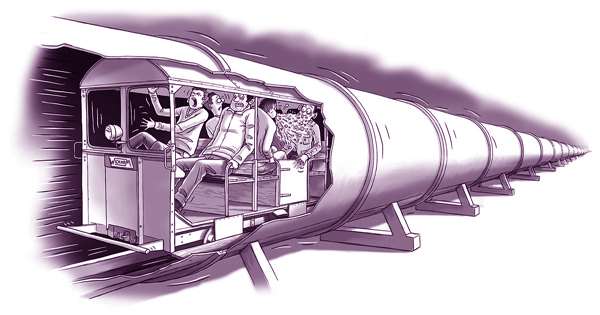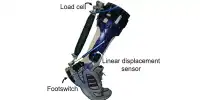Hyperloop is a proposed train-like system of rapid transport, in which a pod travels at extremely high speeds through a vacuum-sealed tube, increasing energy efficiency by cutting travel time and removing wind resistance. The hyperloop pod traveled almost completely silently, almost reaching the speed of sound, which makes it fast and comfortable. Based on the world’s fastest magnetic levitation (maglev) trains, the pod uses extremely powerful magnets to lift over rails before being driven at a speed of 1,223 km / h (760 miles) above the track.
Virgin Hyperloop has completed the first crew test of Hyperloop technology on their 500-meter (1,640-foot) test track, proving the technology is safe and (according to volunteers) quite comfortable. Employees of the two companies were trapped in a pod, pressed on magnetic rails, and rated at 172 kilometers (107 miles) per hour in 6.25 seconds as they fired through the tunnel testing system.
Sultan Ahmed Bin Sulayem, chairman of Virgin Hyperloop and group chairman and CEO of DP World said in a statement, “I had the real joy of making history right in front of my eyes – the first new way of transport in more than 100 years to testify to life.”
The latest iteration of Hyperloop technology involves testing the XP-2 pod, a newly unveiled vehicle produced by Ingles Group and Kilo Design, to prove that it is safe for passengers.
J. Walder, CEO of Virgin Hyperloop, said, “How many times can I ask you,‘ Is Hyperloop safe? “Through today’s passenger test, we have successfully answered this question, showing that the Virgin Hyperloop can not only keep a person safe in a zero environment, but the company has a thoughtful approach to protection that has been legitimized by an independent third party. “
You might think it would be uncomfortable to accelerate above 100 miles in about 6 seconds, but according to Giggle when talking to the New York Times; the transport was “not much different than speeding in a sports car.” Stuck in the pod were two brave volunteers – Josh Giegel, co-founder of Virgin Hyperloop, and Sarah Lucian, director of Virgin Hyperloop, a passenger experience.
The first, original hyperloop proposed by Elon Musk was to extend from Los Angeles to San Francisco, cutting train travel time from 12 hours to just 1 hour. Long-distance hyperloops allow for quick transportation between large cities and can even be used to transport goods within a business.
Creating vacuum-sealed tubes capable of reducing drying over long distances is extremely expensive, and any kind of termination of the sealed tube can lead to catastrophic babble. But hyperloops have been criticized by many scientists for not being economically viable.
The future of fast transport seems promising as Hyperloop technology crosses a huge milestone of safety and comfort and more test tracks are built. However, your car will probably have to do this for many more years before hyperloops are sufficiently economically viable to be used for extremely long distances.














